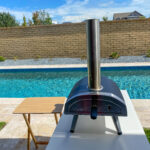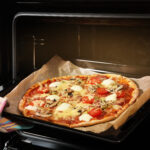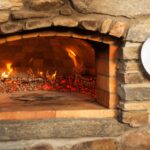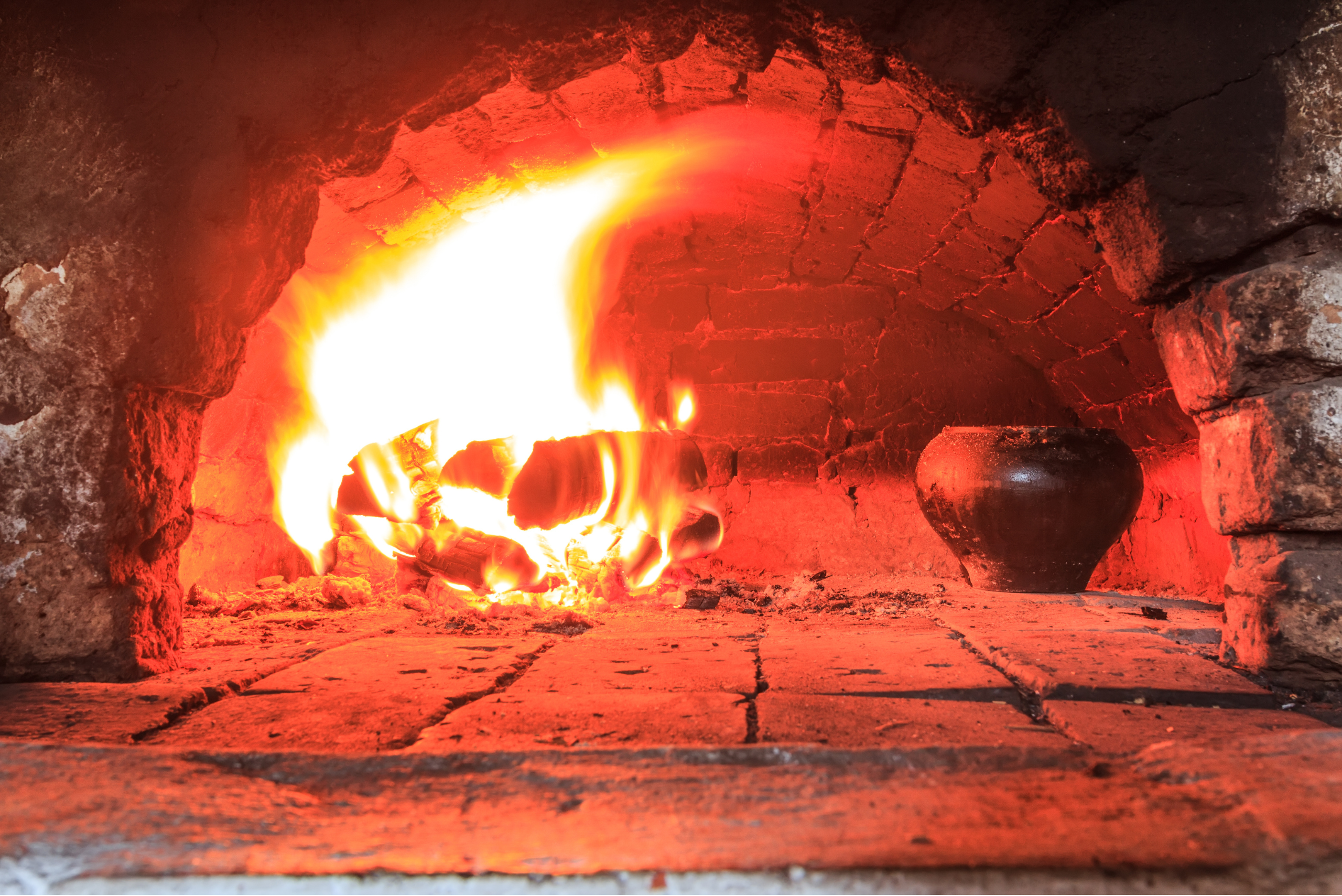Yes, you can fire pottery in a pizza oven. However, there are some important factors to consider before attempting to do so. First and foremost, you will need to ensure that your pizza oven can reach and maintain the appropriate temperatures needed for firing pottery.
Another important consideration is the type of clay being used. Different types of clay require different firing temperatures and times, so it is crucial to research and understand the specific requirements for the type of clay you are using. Additionally, the size of the pottery piece will also affect the firing process, as larger pieces may require longer firing times or different firing techniques.
Overall, firing pottery in a pizza oven can be a great option for those who do not have access to a traditional kiln or who want to experiment with different firing techniques. However, it is important to do your research and ensure that you have the necessary equipment and knowledge to do so safely and effectively.
Understanding Pottery and Pizza Ovens
What is Pottery?
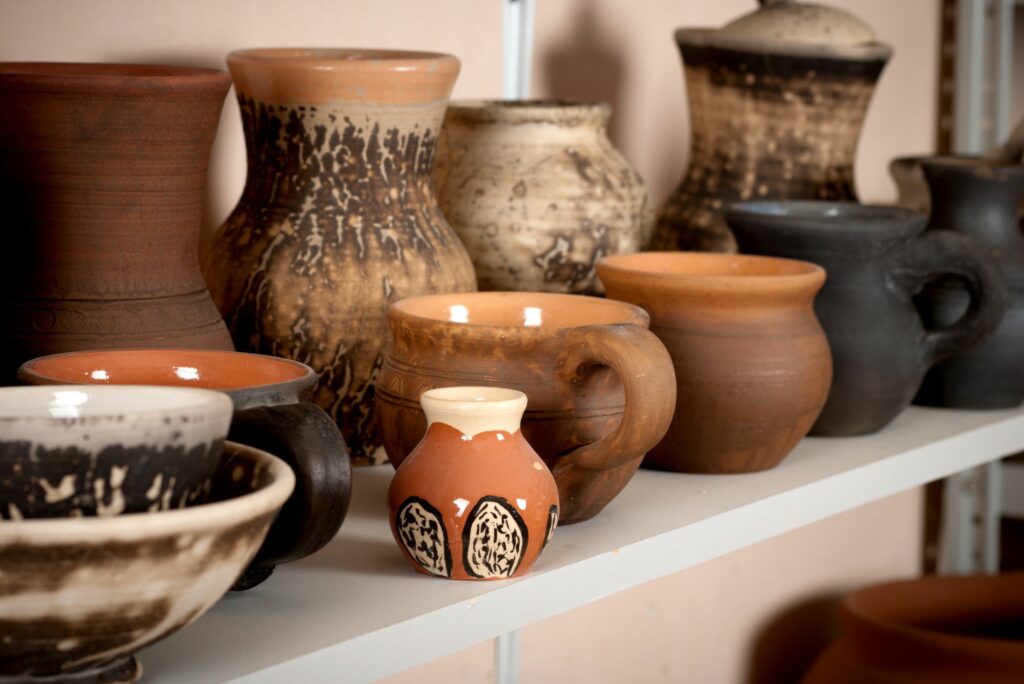
Pottery is a type of ceramic art that involves the creation of objects by shaping clay and then firing it at high temperatures to harden it. The process of firing clay changes its chemical composition, making it more durable and resistant to water. Pottery has been used for centuries for practical purposes such as cooking vessels, storage containers, and decorative items.
What is a Pizza Oven?
A pizza oven is a specialized type of oven that is designed to cook pizza at high temperatures. Pizza ovens can be made from a variety of materials, including brick, clay, and metal. They are typically heated with wood, gas, or electricity. The high temperatures in a pizza oven allow the pizza to cook quickly and evenly, resulting in a crispy crust and perfectly melted cheese.
While pizza ovens are designed specifically for cooking pizza, they can also be used for other purposes, such as baking bread or roasting vegetables. In fact, some people have even used pizza ovens to fire pottery.
It is important to note that firing pottery in a pizza oven requires careful consideration and preparation. Pottery requires specific firing temperatures and times depending on the type of clay being used, the size of the piece, and other factors. Pizza ovens can reach high temperatures, but maintaining those temperatures for the length of time required to fire pottery can be challenging.
In the next section, we will explore the question of whether or not you can fire pottery in a pizza oven.
Can You Fire Pottery in a Pizza Oven?
Pottery firing is a process that requires high temperatures to transform clay into a durable and functional object. While traditional kilns are the go-to option for firing pottery, some pottery enthusiasts may wonder if they can use their pizza oven instead. The short answer is yes, you can fire pottery in a pizza oven, but there are a few things to consider before doing so.
Firstly, pizza ovens are not designed for pottery firing, so you will need to manually maintain the appropriate temperatures. Pottery firing requires temperatures ranging from 1,800 to 2,400 degrees Fahrenheit, depending on the type of clay used. Most pizza ovens can reach temperatures of up to 800 degrees Fahrenheit, which is not hot enough for pottery firing. However, some pizza ovens can be modified to reach higher temperatures, but this requires some technical knowledge and skill.
Secondly, the size of the pottery piece and the firing time needed are important considerations. Pizza ovens are typically small and shallow, which may not accommodate larger pottery pieces. Additionally, pottery firing is a lengthy process that can take several hours or even days, depending on the type of clay and the desired outcome. You will need to ensure that your pizza oven has enough gas or fuel to maintain the required temperature for the entire process.
Lastly, you need to consider the potential contamination of the pizza oven. Pottery firing involves the use of paints and varnishes, which can contaminate the pizza oven and affect future bakes. Therefore, it is recommended to use a separate oven or kiln for pottery firing to avoid any contamination issues.
In conclusion, while it is possible to fire pottery in a pizza oven, it is not the most ideal option. Traditional kilns are designed for pottery firing and can provide better results. However, if you are a pizza oven enthusiast and have the technical knowledge and skill to modify your oven, you can give it a try. Just remember to take into consideration the temperature, size of the pottery piece, firing time, and potential contamination issues.
Safety Considerations
When firing pottery in a pizza oven, it is essential to take safety precautions to prevent accidents and damage to the oven. This section will discuss two critical safety considerations: temperature control and material compatibility.
Temperature Control
Maintaining the appropriate temperature is crucial when firing pottery in a pizza oven. High temperatures can cause the oven to crack, and they can also pose a fire hazard. It is essential to monitor the temperature accurately and avoid exceeding the oven’s maximum temperature.
To control the temperature, you should use a pyrometer or a temperature gun to measure the temperature accurately. You should also use a kiln shelf or a heat-resistant surface to place your pottery on. This will help prevent any damage to the oven and ensure that your pottery is fired evenly.
Material Compatibility
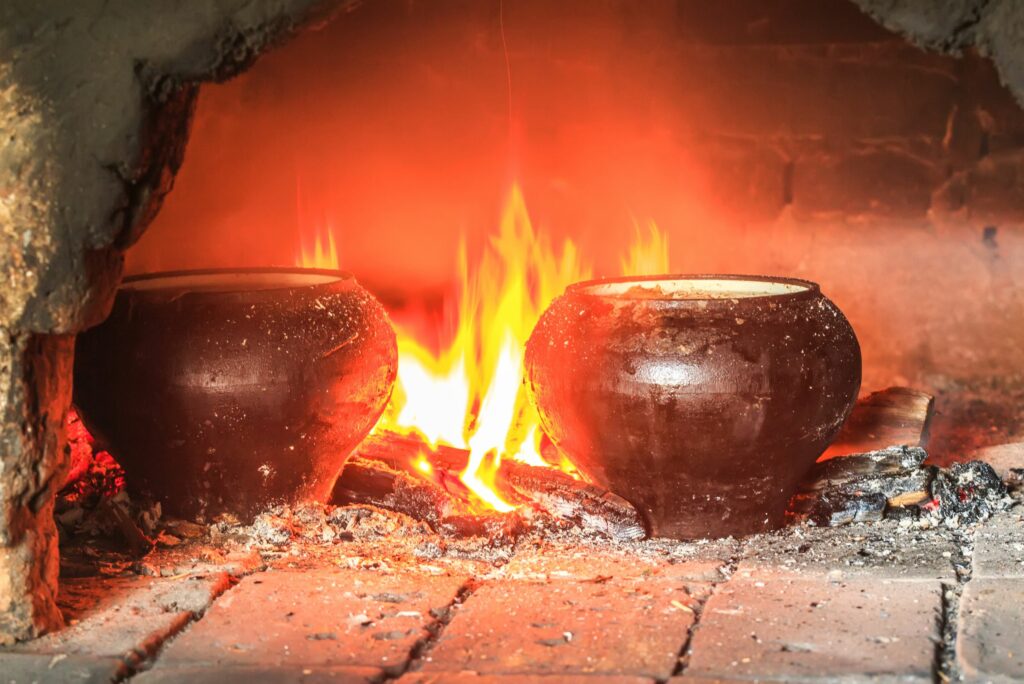
When firing pottery in a pizza oven, it is essential to use materials that are compatible with the oven. Some materials may release toxic fumes when heated, which can contaminate the oven and affect future bakes. It is essential to use clay that is specifically designed for high-temperature firing and to avoid using glazes or paints that contain harmful chemicals.
It is also important to note that firing pottery in a pizza oven can leave residue on the oven’s surface. To prevent contamination, you should clean the oven thoroughly after each use and avoid using the oven for cooking food.
In summary, firing pottery in a pizza oven can be a great way to create unique and beautiful pieces. However, it is crucial to take the necessary safety precautions to prevent accidents and damage to the oven. By controlling the temperature and using compatible materials, you can create beautiful pottery safely and efficiently.
Pros and Cons of Using a Pizza Oven
When it comes to firing pottery, a pizza oven can be a viable option. However, there are some pros and cons to consider before using a pizza oven for pottery firing.
Advantages
Here are some advantages of using a pizza oven for pottery firing:
- Cost-effective: Pizza ovens are relatively cheaper than traditional kilns, making them an affordable option for hobbyists or beginners.
- Easy to use: Pizza ovens are easy to use and require minimal setup. You don’t need any special equipment or tools to fire pottery in a pizza oven.
- Quick firing time: Pizza ovens can reach high temperatures quickly, which means that pottery can be fired in a shorter amount of time compared to traditional kilns.
- Versatile: Pizza ovens can be used for more than just firing pottery. You can also use them to cook food, making them a multi-purpose investment.
Disadvantages
Here are some disadvantages of using a pizza oven for pottery firing:
- Limited temperature range: Pizza ovens have a limited temperature range, which may not be suitable for firing certain types of pottery. They typically reach temperatures up to 900°F, which is not enough for high-temperature firing.
- Limited space: Pizza ovens have limited space, which means that you can only fire a limited amount of pottery at a time.
- Lack of precision: Pizza ovens do not have the same level of precision as traditional kilns. This means that you may not be able to achieve the same level of consistency and quality in your pottery.
- Safety concerns: Pizza ovens can be a fire hazard if not used properly. It is important to take proper safety precautions when firing pottery in a pizza oven.
Overall, using a pizza oven for pottery firing has its advantages and disadvantages. It can be a cost-effective and easy-to-use option for hobbyists or beginners. However, it may not be suitable for more advanced pottery firing due to its limited temperature range and lack of precision. Safety should always be a top priority when using a pizza oven for pottery firing.
Alternatives to Firing Pottery in a Pizza Oven
While a pizza oven can reach the necessary temperature for firing pottery, it is not the most ideal option. Here are some alternatives to consider:
Kiln
A kiln is the most common and efficient way to fire pottery. Kilns can reach high temperatures and provide consistent heat, resulting in a more even firing. They come in various sizes and types, including electric, gas, and wood-fired. Kilns can be expensive, but they are a worthwhile investment for serious potters.
Raku Firing
Raku firing is a Japanese technique that involves removing pottery from the kiln while it is still hot and placing it in a container of combustible materials, such as sawdust or newspaper. The pottery is then covered, causing the materials to ignite and create a reduction atmosphere. This results in unique and unpredictable glaze patterns. Raku firing can be done in a small kiln or even in a metal trash can.
Pit Firing
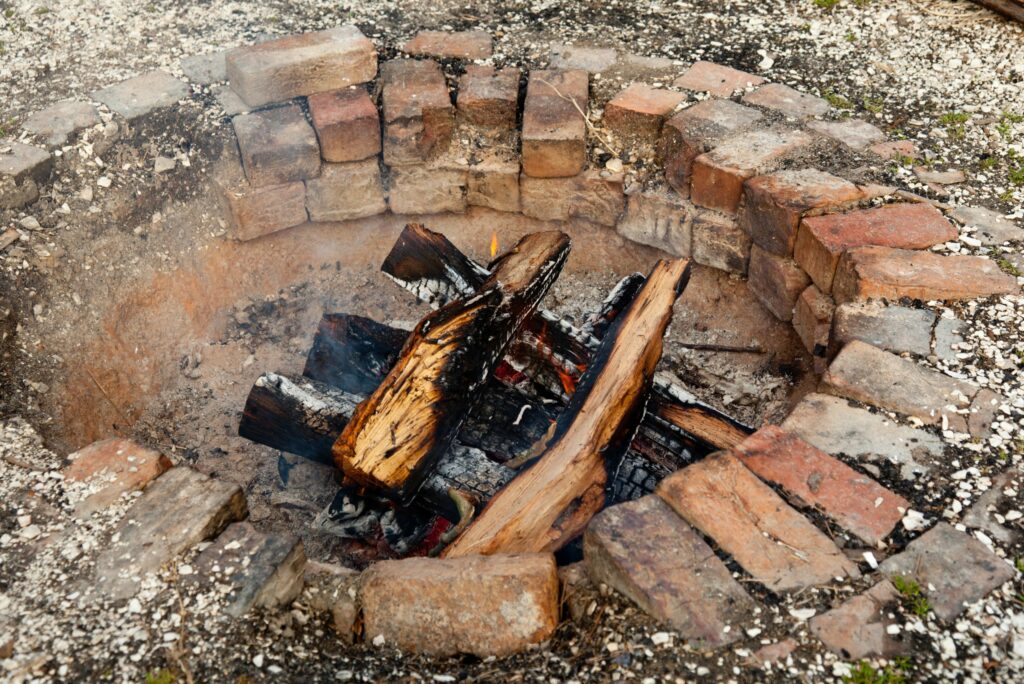
Pit firing is an ancient technique that involves digging a hole in the ground, filling it with pottery and combustible materials, and lighting it on fire. The pottery is then covered with more materials, such as sawdust or leaves, and left to cool overnight. This method produces unique and rustic pottery with earthy colors. Pit firing can be done in a backyard or open field.
Electric Oven
While not as efficient as a kiln, an electric oven can be used to fire pottery at a lower temperature. It is important to note that the oven should only be used for pottery and not for food to avoid contamination. The pottery should also be placed on a kiln shelf or other heat-resistant surface to prevent damage to the oven.
In conclusion, while a pizza oven can be used to fire pottery, there are more efficient and reliable alternatives available. A kiln is the most common and efficient option, but raku firing, pit firing, and electric ovens can also produce unique and interesting results.
Conclusion
In conclusion, firing pottery in a pizza oven is possible, but it requires careful consideration and attention to detail. It is important to note that not all pizza ovens are created equal and not all types of clay are suitable for firing in a pizza oven.
Before attempting to fire pottery in a pizza oven, it is crucial to ensure that the oven can reach the appropriate temperature for firing pottery. Most pizza ovens can reach temperatures of around 700-800 degrees Fahrenheit, which is sufficient for firing certain types of clay. However, some types of clay require higher temperatures, and it is important to research the specific temperature requirements for the type of clay you plan to use.
In addition to temperature considerations, it is also important to take into account the size of the pottery piece and the firing time needed. It may be necessary to fire the pottery multiple times to achieve the desired result, and it is important to follow proper firing procedures to avoid cracking or damaging the pottery.
Overall, firing pottery in a pizza oven can be a fun and rewarding experience, but it requires careful planning and attention to detail. With the right equipment and proper techniques, it is possible to create beautiful pottery pieces in your own backyard.


